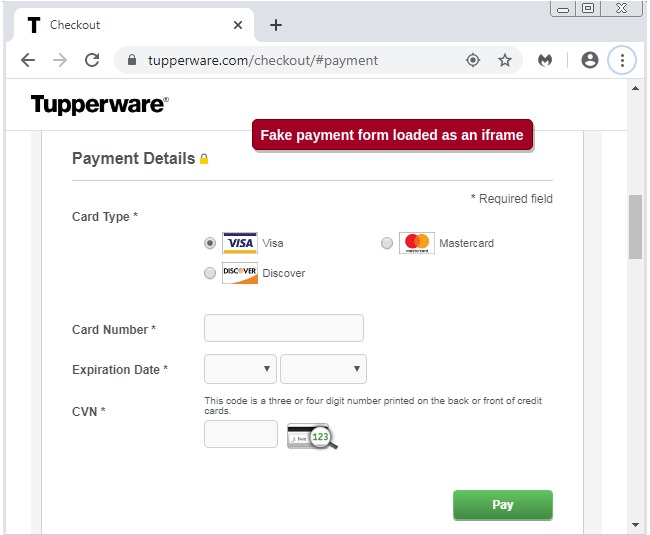People who made purchases from the official Tupperware website over the past couple of weeks may have had their payment card information stolen, cybersecurity firm Malwarebytes warned on Wednesday.
Cybercriminals apparently hacked tupperware[dot]com and planted malicious code designed to steal payment card information. The credit card skimmer was planted on the main website and some of its localized versions, Malwarebytes said.
The website has nearly one million visitors every month, which indicates that the hackers may have obtained a significant number of payment card records as a result of this attack.
According to Malwarebytes, the credit card skimmer planted on the Tupperware website displayed a fake payment form during the checkout process. The form asked unsuspecting users to provide information such as name, billing address, phone number, credit card number, card expiry date, and CVV.
Once the information was handed over to the hackers, a “session timed out” message was displayed and the victim was directed to the legitimate checkout page. However, by that time the attackers already had their information.

Malwarebytes said it was unclear how the attackers breached the Tupperware website, but it’s possible that they did it through a Magento vulnerability — the website is running an outdated version of the Magento e-commerce platform.
As for how long the skimmer was present, the company’s researchers believe the malicious code was planted sometime after March 9, the registration date of the domain responsible for loading the iframe that displayed the phishing page.
Malwarebytes noticed the skimmer on the Tupperware website on March 20 and immediately alerted the vendor. However, Tupperware ignored Malwarebytes’ emails and calls and the malicious code remained active until March 25, when the cybersecurity firm made its findings public. The malicious code was removed shortly after a blog post describing the attack was published.
SecurityWeek has reached out to Tupperware for comment and will update this article if the company responds.
A significant number of major companies had their websites hacked in similar attacks over the past year and many of these operations have been attributed to Magecart, an umbrella term that encompasses multiple different threat groups that use the same technique to steal payment card information.
“Though the iframe injection was crafty, this type of attack should only work on websites that have implemented very few security measures. Standard server headers to block iframes would have stopped this attack,” Matt Keil, director of product marketing at Cequence, told SecurityWeek. “As we look at how Magecart attacks work, having a simple understanding of where your clients are being redirected is becoming necessary. 3rd party code is needed but it shouldn’t be an open attack vector whether it is placed on the website maliciously, brought in to the client via an iframe or has a legitimate use, organizations need to monitor how it is impacting their clients.”
Related: Website of Gunmaker Smith & Wesson Hacked in Magecart Attack
Related: Hunting for Magecart With URLscan.io















